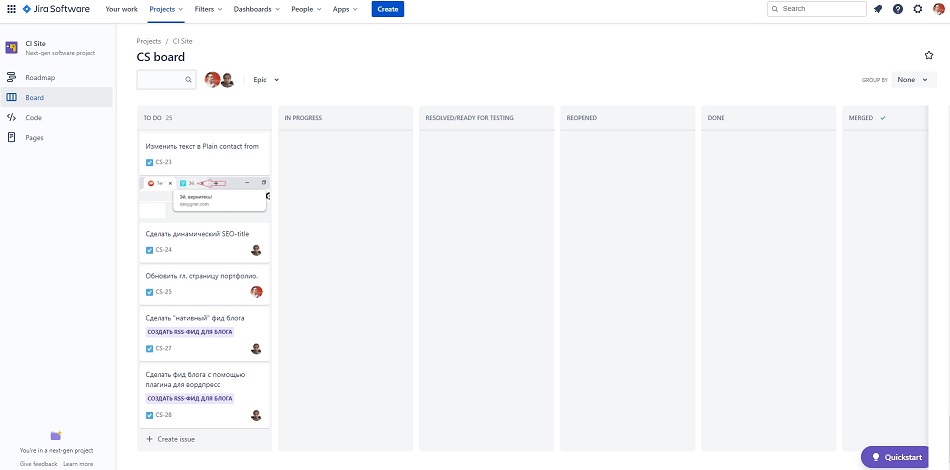Software development project
The article is a part of Code Inspiration’s software development outsourcing Knowledge Base.
Doing your deep research to select a new outsourcing software development company or hiring a local software development company to work on your project requires control of the ongoing development procedure. In the article we will talk about options for a customer to control or at least to participate in the software development process at some stages.
Not to find out in a half year period term that the software you have ordered doesn’t look exactly as required, you should know about options, which you have as a customer, to monitor the ongoing development of your software development project.
Option 1: Agile methodology
 Agile is so popular among outsourcing development companies today because of its transparency. It is a management methodology with the main idea of sprints of 2-3 weeks duration. Usually, you as a customer, would be invited to Jira or Trello (agile management tracking tools). You will see all tasks you have agreed on to perform during this period and how they are progressing.
Agile is so popular among outsourcing development companies today because of its transparency. It is a management methodology with the main idea of sprints of 2-3 weeks duration. Usually, you as a customer, would be invited to Jira or Trello (agile management tracking tools). You will see all tasks you have agreed on to perform during this period and how they are progressing.
Usually the columns to track the progress of the task would look the following way:
- TO DO
- IN PROGRESS
- DONE
- READY FOR TESTING
- REOPENED
- MERGED
But not limited to this order and wordings.
Option 2: Access to the development environment
In addition to option one, or in case for some reason you were not provided with the access to the management tool the team is using, ask for the access to the development environment. Before making updates to production your team participants can do the development locally and further should update development server for QA to test.
Discuss with your team how often can they update the development server for you to have a look. As looking at even not final results will provide you with knowledge that the work is progressing.
Option 3: Divide fixed-scope project into iterations
It is always sad to hear stories when people started working with a freelancer or a software outsourcing company, agreed on a timeline of 4-6 months for the development, paid the prepayment and were waiting patiently. Then, in 4-6 months the customer noticed that the software is full of bugs, or was developed only on the front end. And multiple variations of the fraud which, unfortunately, take place in the reality of nowadays.
To avoid such a situation, ask the team to divide the project the way that they have something to show in 1 month, further in 2 months etc. Practice shows it is fully possible to arrange the team to deliver pieces of the functionality if the management is done well.
This will for sure help you to sleep well at night and will provide you with a possibility to change the vendor at early stages if you see that the software delivered, or the piece of the functionality, don’t meet your expectation.
Additional options
It is always a good idea to participate in the conversation with your team. You should discuss this in advance if it doesn’t conflict with the philosophy of the company, but it is always a good idea to have a video call and to represent yourself to your team. Share some personal info, main idea of the project, what is important for you in the process of your cooperation and so on. An introduction call usually brings trust and further, if you are added to the communication channel where the development team will communicate about the ongoing development, you will always be up-to-date about the problems on the project, about the stage the developers are working on and other interesting details you will never get neither via “management tool” option, nor via “development environment”.
It is always extremely important to make sure the development is going on properly. Additionally, close communication with the team will bring you tons of positive emotions and provide you with great professional connections.
The article is a part of Code Inspiration’s software development outsourcing Knowledge Base.

